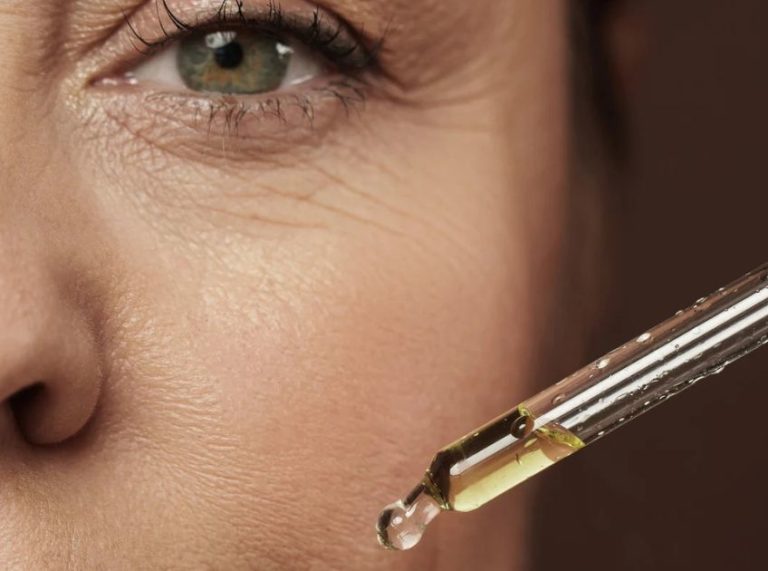
Important: This article is for informational purposes only. Please read our full disclaimer for more details.
When it comes to arts and crafts, acrylic paints are the most popular. Whether you need to paint on canvas, bottles, planters, or any other surface to make things look beautiful and creative, acrylic paint comes to the rescue. However, when it comes to applying acrylic paint to the skin, people often get into a dilemma. Some questions that ponder the mind are, will acrylic be safe for the skin, or will it harm and cause rashes? Another question that often comes is how to remove acrylic paint if it gets applied to the skin accidentally. If you also work with acrylic paint and looking for such answers, keep reading to find answers to all your queries.
What Are Acrylic Paints?

Earlier, oil-based paints were the most common medium for artists to create their art. However, being toxic, different other types of paints replaced them, among which acrylic paints get the most popular due to their closest resemblance with oil paints. Acrylic paints are fast-drying paints made of pigments within an acrylic polymer emulsion, plasticizers, defoamers, surfactants, silicone oils, and stabilizers. These paints are water-based and, after drying, become water-resistant.
What Are The Major Ingredients Of Acrylic Paints?

Basically, acrylic paints are made by adding pigments in acrylic polymer emulsion along with other ingredients. Some acrylic paint may contain ammonia, lead, and formaldehyde. You should always see the composition before buying and choosing lead-free paints. Even though most of the pigments used to make acrylic paint are harmless, some can be toxic too. For instance, if the name of pigments is similar to that of a heavy metal like lead, it is most likely toxic. So be extra cautious.
[ Read: How To Self Tan Your Face ]
Some hazardous pigments that can be found in acrylic paint are-
- Cobalt pigment– It is a moderately toxic pigment that can cause skin allergies when came in contact with skin, asthma when inhaled, and vomiting and diarrhea when ingested. If the pigment is inhaled, it can cause asthma.
- Cadmium pigment– Although this pigment is rare and less likely to be found in paints, it should be completely avoided as it is carcinogenic. Cadmium pigment is often found in oil-based paints.
- Chromium pigment– It can cause dermatitis and allergic reactions. The skin may get red and itchy when it comes to its contact.
- Manganese pigment- It is a toxic pigment that can cause similar symptoms as cobalt and cadmium.
Can You Use Acrylic Paint On The Skin?
None of the components in acrylic paint is a pharmaceutical-grade ingredient. It signifies that acrylic paints are not safe for the skin. There is a range of specific paints manufactured for application to the skin. Only such paints should be used to create art on body parts. However, you should also use them with extra care and not let them sit on the skin for too long. It is advised to wash them off as soon as possible.
Harmful Effects Of Acrylic Paint On Skin
- Toxic: Generally non-toxic, some ingredients are still not safe for the skin and should be avoided.
- Get hard when dry: Acrylic polymer emulsion is a type of plastic that get hard when dry. Therefore, it should be avoided using on the skin.
- Form cracks: Applying acrylic paint on the skin may crack after drying due to the body’s movement.
- Hard to remove: Since acrylic paints get hard after drying, it will become difficult for you to move. At the same time, removing it will require soap and water. The skin may get irritated. Peeling the paint off could become a painful process.
How To Remove Acrylic Paint From The Skin?
If you have applied acrylic paint on the skin by mistake, removing it could be difficult. Firstly, it is advised to wash off the paint before it gets dry by scrapping gently and rinsing it with water thoroughly. If the paint has become hard, water and soap alone would not be enough to remove it. You need to scrub the paint off and then use water and soap to clean the area. Later, apply baby oil or some gentle moisturizer to make the site well-hydrated and supple. Another way to remove it is by peeling off the paint; however, this method could cause pain as the hair gets stuck in the paint. Some other ways include using hand sanitizer, rubbing alcohol, Vaseline, and petroleum jelly. Since acrylic paint is made of different pigments and ingredients that are generally chemicals, it should be the last thing you think about applying to the skin. Be gentle on your skin and use only paints that are tailor-made for your skin.
You Might Also Like
- Does Body Wash Expire?
- Why Brass Jewelry Turn Skin Green?
- Does Brass Jewelry Turn Skin Green?
- Can You Use Shampoo As Body Wash
- How To Use Toner?
- Can You Paint Your Nails With Acrylic Paint?
- 8 Easy Homemade Face Scrubs for Every Skin Type
- How To Remove Acrylic Nails With Dental Floss At Home
- 10 Best Homemade Skin Toners For Glowing Skin
- How Do You Get Rid of Age Spots?
- 10 Best Homemade Skin Toners For Glowing Skin
- 8 Easy Homemade Face Scrubs for Every Skin Type
















